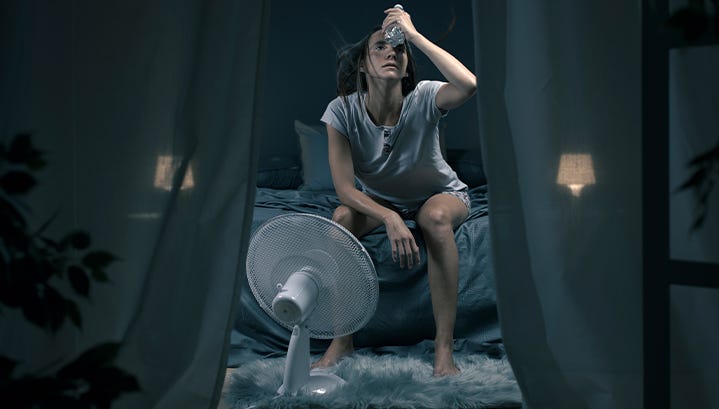Empty cart?
We can only assume that's because you haven't seen our latest offers
Sensilab uses cookies for their websites, which does not store personal data. Some cookies might already be installed. By proceeding to use this website you consent to the cookie usage.
Contact us online
100% satisfaction guarantee
Free delivery above €50
Contact us
info@sensilab.ieCan hot flushes be effectively addressed through natural means? Indeed, scientific evidence supports this. Numerous studies have demonstrated the efficacy of cognitive behavioural therapy (CBT) in providing noticeable relief. Let’s delve into the details and explore how this technique can genuinely assist in managing hot flushes.

CBT, short for Cognitive Behavioural Therapy, is a type of talking therapy grounded in the idea that our thoughts, feelings, and actions are interconnected with our physical well-being. The core concept is that by changing one of these elements, we can influence the others.
CBT aims to empower individuals by cultivating a deeper understanding of these links. It goes beyond insight, offering practical tools to manage challenges, fostering the development of new coping skills, and providing effective strategies. A fundamental principle of CBT is that our perspective or thinking within various situations, such as at work, significantly influences our emotions and subsequent coping behaviours in those situations.
The menopause transition encompasses changes at biological, psychological, and social levels for most women. Hot flushes and night sweats, physical symptoms triggered by fluctuating oestrogen levels, can be particularly challenging to navigate during this transition.
However, the menopausal process isn’t solely biological: social and psychological changes also play a significant role. As the physical symptoms intensify, they may lead to feelings of embarrassment, anxiety, discomfort, and disruptions in sleep.
A study involving over 600 women in the UK and the Netherlands revealed that CBT significantly reduces the impact of hot flushes and night sweats while also improving mood and overall quality of life.

Let’s take a look at a woman experiencing a hot flush at work. If she thinks negatively, believing people are staring and judging her, she might feel embarrassed and anxious, intensifying the physical reaction. Avoidance behaviours, like wanting to escape the situation, can be unhelpful in the long run.
Cognitive and behavioural strategies in CBT aim to develop a calmer, more accepting view of the situation, allowing for a helpful response. Women can identify and challenge negative thoughts, fostering a shift toward more neutral and manageable perspectives.
In CBT sessions, therapists and clients collaborate, with clients taking an active role in working towards goals aligned with their values. Structured sessions cover jointly agreed-upon topics, and clients are encouraged to try practical strategies as homework, discussing outcomes in subsequent sessions. This approach empowers women to navigate menopausal challenges effectively.
Given the unique nature of every woman’s menopausal journey, there’s no one-size-fits-all solution. Instead, there’s a range of exercises and techniques tailored to personal circumstances. For those interested in trying these techniques independently, there are many books that provide valuable resources. Here is an example of a technique you might explore:
Example of CBT for hot flushes: rethinking your thinking
Women are encouraged to challenge negative attitudes and beliefs about menopause and hot flushes, recognising that these experiences are often wrongly considered shameful or socially taboo. In CBT sessions, women identify key thoughts during a hot flush, evaluate their helpfulness and emotional impact, and work towards adopting more compassionate and neutral perspectives in those situations.
To make your menopausal journey more comfortable, consider complementing cognitive behavioural therapy (CBT) with M-Pause – a hormone-free solution designed to balance hormones and alleviate symptoms naturally.
M-Pause incorporates phytoestrogens, such as hop and red clover extracts. Phytoestrogens mimic the effects of oestrogen in the body and can help balance hormone levels, especially during times of hormonal fluctuations like menopause. This can effectively reduce hot flushes and night sweats.
CBT might not suit everyone, and it demands time and commitment. However, the benefits can be significant as CBT imparts life skills that help beyond sessions.
CBT is widely accessible for anxiety and depression in many healthcare settings worldwide. If you’re dealing with stress, sleep issues, anxiety, or low mood, consult your healthcare provider for information.
Products for you
You may be interested
Leaving already?
You’ve left [X] items in your cart.
We can’t guarantee the products will still be available when you return.
Check out now and get an EXTRA 10% OFF.
